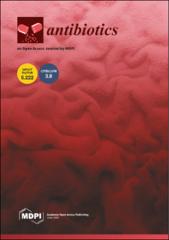Environmental BovineMastitisPathogens:Prevalence, Antimicrobial Susceptibility,andSensitivityto Thymus vulgaris L., Thymus serpyllum L., and Origanum vulgare L. EssentialOils

View/
Date
2022Author
Tomanić, Dragana
Božin, Biljana
Kladar, Nebojša
Stanojević, Jovan
Čabarkapa, Ivana
Stilinović, Nebojša
Apić, Jelena
Božić, Dragana D.
Kovačević, Zorana
Metadata
Show full item recordAbstract
Mastitis is considered to be one of the most important diseases of dairy cows in terms of health, production, and economy. Being the most common cause of antibiotic consumption in dairy cows, treatment of this disease is one of the biggest challenges in the veterinary profession as an increasing number of pathogens develop resistance to antibiotics used in the treatment. Therefore, new alternative approaches for limiting the use of antibiotics in livestock are required. For this reason, our study aimed to investigate prevalence of environmental mastitis associated bacterial strains, as well as the sensitivity of isolated strains to different antibiotics. Additionally, the therapeutic potential of three essential oils (EOs) was tested against bovine Serratia spp. and Proteus spp. mastitis pathogens, based on their chemical composition, as well as antibacterial potential. The study was carried out on 81 milk samples collected from dairy cows with mastitis. In order to determine prevalence of S. marcescens and P. mirabilis, microbiological isolation and identification were performed. Antimicrobial susceptibility testing was performed by disk diffusion method and the microdilution method was used to determine the antibacterial activity of selected EOs. In the oregano EO, a total of 23 compounds were detected, with carvacrol as a dominant component (78.94percent). A total of 26 components were present in the EO of common thyme, where thymol was the most abundant compound (46.37percent). Thymol also dominated (55.11percent) the wild thyme EO. All tested EOs displayed antibacterial activity against all strains to different extents, while wild and common thyme EOs were the most effective. It could be concluded that the tested EOs represent promising therapeutic candidates for effective non-antibiotic treatment of mastitis. Keywords: antimicrobial resistance; cows; essential oils; mastitis; Proteus mirabilis; Serratia marcescens
